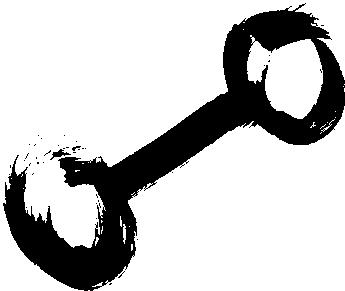|
by Stefan Stenudd
|
The dot-com stock market declineFinancial Astrology about the Crisis (June 28, 2002) It is easy enough to use hindsight and make simple conclusions about the dot-com crash. For about half a year before the crash, IT shares rose to fantastic rates, which went from optimistic, to unrealistic and then outright ridiculous.
In March of 2000, it hit the ceiling, and fell downward. By summer, the IT shares had sort of stabilized on rates dramatically lower than the ones they had in March, but still much higher than those before the fall 1999. That should be it, normally. But then, in the fall of 2000, the rates again started sliding downhill, stabilized some in early 2001, and then continued to drop until the fall of 2001, where they rose until New Year 2002, again to fall. When I write this, in June of 2002, they have not recovered, but sunk to record low levels. During the spring of 2002 they have dropped below the rate they had before the boom started in 1999.
Bell curvesTwo major bell curves can be seen — one from the fall of 1999 to the fall of 2001, and another, not that dramatic, from the fall of 2001 to the summer of 2002. Or maybe three — one big bell from the fall of '99 to the spring of 2001, one minor bell from the spring of 2001 to the fall of the same year, and one distinct but small bell from that fall until the summer of 2002. By the fall of 2001, rates went below the 1999 value — before the boom. Then they rose above it until the spring of 2002, to plummet well below it.
 Swedish IT stock index curve 1999-2002.
One event was the IT boom, peaking in March 2000. That bell curve should be regarded as a single event. September 11 had a negative effect on the stock market, of course, maybe mostly because it was presumed to. That decline was very short, though. The rates dipped low, and then quickly rose beyond the level they had been before that date. It is during the first half of 2002 that the last decline has happened, with no evident relation to September 11. Actually, catastrophe usually has a tendency to be good for business, because of the sudden change and movement it causes.
Pluto and Saturn opposedI have not had the time to astrologically map all the events of what began with the dot-com rise and fall, but for the latest decline of the stock market — not only its IT shares — I see an explanation in the opposition (180°) of Pluto and Saturn.This is an astrological event, which reappears about every 35 years or slightly less, and no astrologer would hesitate to call it malignant. Its relation to stock market decline is evident: this time it coincides with a heavy decline, and so it did the previous two times as well — in the mid-1960s and in the early 1930s. I don't know if those are the most significant stock declines of the past century — well, the one in the 30s must be.
 Of course, stock market decline can be related to other astrological events, but the one at work now is the Pluto and Saturn opposition. This particular opposition takes some time, before it is over, since both planets are slow in their orbit around the zodiac. The formation was exact on August 5, 2001, then retrograde motion made it reappear on November 2 the same year, and finally again on May 25, 2002. It will get very close to yet another formation on February 21, 2003, but there it will lack some 2.5° to completion. Then it takes more than 30 years until it appears next. So, the effect of the Pluto-Saturn opposition stretches from August 2001 to May 2002, at least. In reality, an aspect as rare as this one is felt in the world months before and after it happens, too. Let's say from the summer of 2001 until the summer of 2002. Since the aspect is near to form again in February 2003, it may very well have its influence until the spring of that year, more or less. Its concrete and lasting effects, though, are enclosed by the dates August 5, 2001, and May 25, 2002.
How to adapt to change?The opposition can take place in any two signs opposite one another in the zodiac. This time it happened with Saturn in Gemini and Pluto in Sagittarius. Gemini is about communication, in all its forms, and Sagittarius is about distance, freedom, change and renewal.Therefore, the essence of this aspect is the insoluble contradiction between renewal and how to adapt to it. Pluto, the planet of drastic change, and Saturn, that of tradition and responsibility, make this dilemma even more defined: how to adapt the established routines of society, to the dramatic change it is going through?
 Pluto entered Sagittarius in 1995, making the start of an age rightly to be called virtual reality, a space age of the mind and its exploration of computer cosmos. Yes, in short: the internet. That took off around 1995. Saturn moved in to an opposition with this in 2001 — raising the question: how should people relate to one another in this cyberspace? In the world of business, this question got the form of: is there really money in this? Of course, there are ways to keep and transmit the values of old, also on the internet, the IT super-highway, and of course there is money to be made on it — just not exactly as initially assumed. A new line of business needs new calculations on what to sell, how to sell, and where the buyers are. Let's be frank about it: money is not golden, business is not the peak of human creativity. Those who govern business are not the first to realize where it's at, so to speak. They spend fortunes on ghosts, before they learn, and then they spend another fortune to hide their mistakes. But at the end of it, they adapt to circumstances, maybe better than any other force in society. This opposition of Pluto and Saturn stands for the price they pay for this adaption. It is unavoidable.
Saturn in Gemini: complications in communicationAnother astrological ingredient working in the dot-com stock drop, is the fact that Saturn is in the sign of Gemini. As mentioned above, Gemini is linked to communication in all its forms, and therefore very relevant to the IT business and the internet.
 Saturn is a grave planetary influence. This has been known for ages, since it is one of the planets that can be observed with the naked eye. In the sign of Gemini it causes worry, complication and drawbacks in the field of communication, as long as the planet remains in the sign. Second thoughts, is a good sum of it. Saturn entered Gemini exactly on August 10, 2000, but because of retrograde motion it exited back to Taurus on October 15, the same year, and reentered Gemini on April 20, 2001. It will remain in the sign until June 4, 2003. So, the adversity in the field of IT, and the mistrust of it in the stock market, will remain until June of 2003. Unassisted by the opposition of Saturn and Pluto, though, it will not be as dramatic as it has been during the phases of that opposition. Putting the two astrological events together, gives the following chain of events:
After Gemini, Saturn will pass through Cancer, the sign of health care and medicine. In that period, then, there will be a mistrust in the medical business fields.
The Moon Node also opposes PlutoThere is one more ingredient, in the IT stock decline — also one with a relation to Pluto in Sagittarius. The moon node approaches an opposition to Pluto. It will be exact on August 2, this year.The node passed Saturn on June 6, less than two weeks after Saturn had its last exact opposition with Pluto. The moon node is actually two — the northern and southern, exactly 180° apart. So, if one is in opposition to Pluto, the other one must be in conjunction with the planet. This is why the interpretation of this aspect needs to be somewhat ambiguous.
 When the nodes travel toward their meeting with Pluto, this is a period of increased concern, almost anxiety, like of an unclear threat approaching. Since the moon nodes take more than 18 years to make one complete orbit through the zodiac, the approach of an aspect — in this case the most forceful one, at that — is felt well in advance. A few months, at least — since about late spring of this year. Also after the aspect has been formed, its effect lingers on for some time, but not as long as it was felt beforehand. At the exact formation, the ambiguity is evident. In this case, the opposing node will bring a doubt in the direction modern society is headed, regarding reform and renewal of perspectives — a technology spinning off into the future, the sense of an immense new area, or space, to explore and exploit. While the opposing node causes a disbelief in this "brave new world", the node in conjunction with Pluto will bring a sense of necessity to this change of society, but at the same time raise concern about where it will put the common man, how we can be able to adapt to all the new things. There is worry that the development will alienate people, bring us farther apart, and make us strangers to our own society. In short, a wide questioning of the direction society is heading. In the business community, this brings hesitation, when it comes to investing in IT industry — not because it would be bad business, but because the future of it is so vague. That is, again, the root of the problem for the IT stock market today: certainly the future belongs to IT, to a large extent, so there has to be big money to be made in it — but it has become increasingly hard to predict exactly what of the IT explosion is sound investment. Although we already have a highly computerized society, definitely belonging to the future — it remains difficult to foresee. After August 2, or thereabout, some of the anxiety will dissolve — but the distrust of today will not fade out completely until the summer of 2003. By then, it will be full speed ahead, again.
Financial AstrologyThe US Credit Crisis Horoscope Pluto in Capricorn — Turmoil in Finance Saturn — Its Effect on Finance The NASDAQ Stock Exchange Horoscope
MenuCOMPLETE HOROSCOPEHow to Make Your Own HoroscopeYour Health HoroscopeSex in Your HoroscopeZodiac ArchetypesFinancial AstrologyDaily Horoscope Guide — What to ExpectTetrabiblos — the Ancient Astrology BibleHOROSCOPE BASICSZodiac — the "how" of the horoscopePlanets — the "what" of the horoscopeHouses — the "where" of the horoscopeAspects — the "why" of the horoscopeFAMOUS HOROSCOPESDonald Trump — 2025 inauguration horoscope2024 presidential election horoscope for Kamala Harris2024 presidential election horoscopes for Donald Trump and Joe BidenJoe Biden's 2020 presidential election horoscopePete Buttigieg's 2020 presidential election horoscopeDonald Trump — impeachment horoscopeDonald Trump — will he resign?Hillary ClintonMike PenceBarack ObamaAnders Behring BreivikMichael JacksonSarah PalinBrad PittThe USA Horoscope — Finding and Reading ItPREDICTIONSThe USA Pluto return 2022 horoscopeCapitol attack horoscopeCovid-19 coronavirus horoscopeFuture of the InternetThe Age of AquariusUSA 2016 ElectionMundane Pluto — Its Effect on SocietyMundane Neptune — Its Effect on the ArtsMISCAbout the Complete Horoscope WebsiteDisappearing Ascendant — Latitude EffectsThe Envelope Chart — Horoscope of the PastAstrology LinksAstrologi på svenskaContactCookiesZODIAC SIGNSThe twelve Zodiac signs and what they mean in astrology.
MY OTHER WEBSITES
Tarot Card Meanings
I Ching Online
Stefan Stenudd
About meI'm a Swedish astrologer, author and historian of ideas, researching ancient thought and mythology. My personal website: stenudd.com
|




